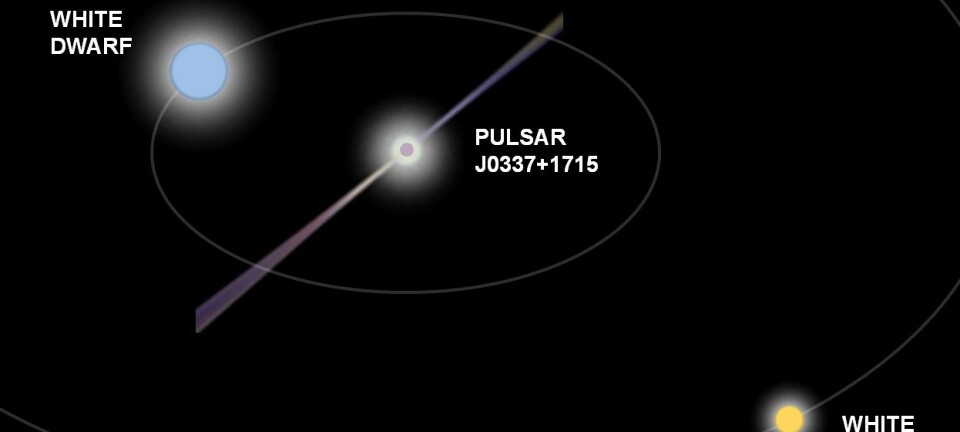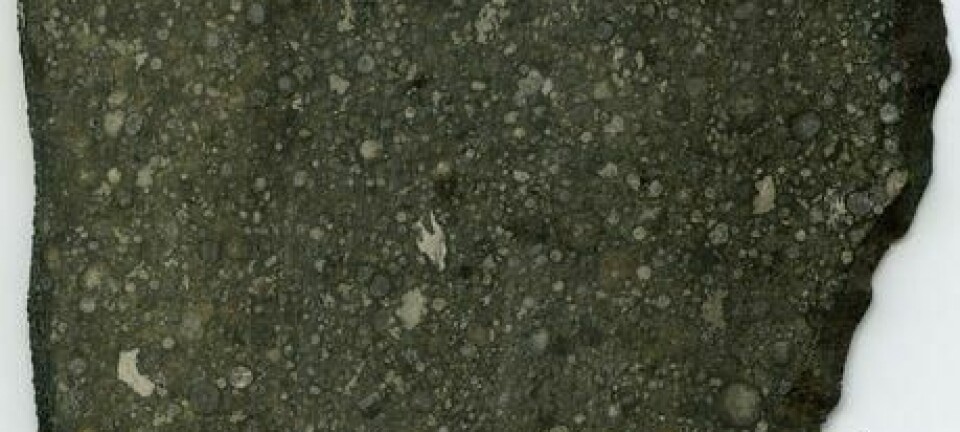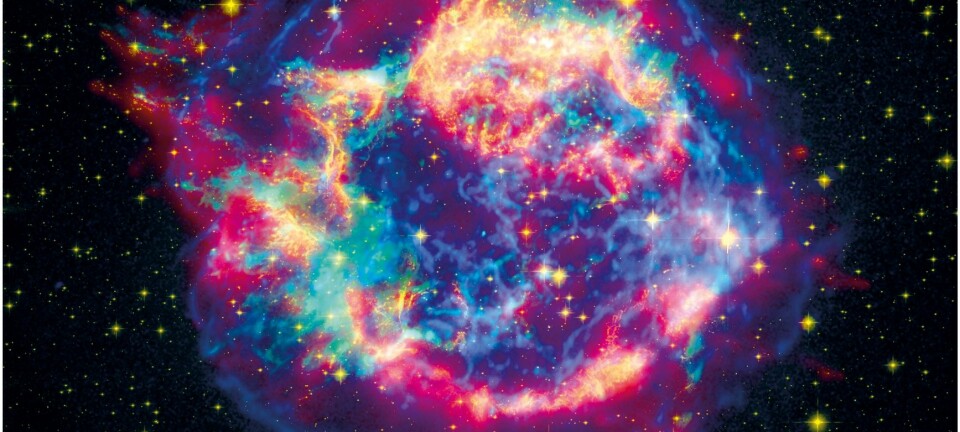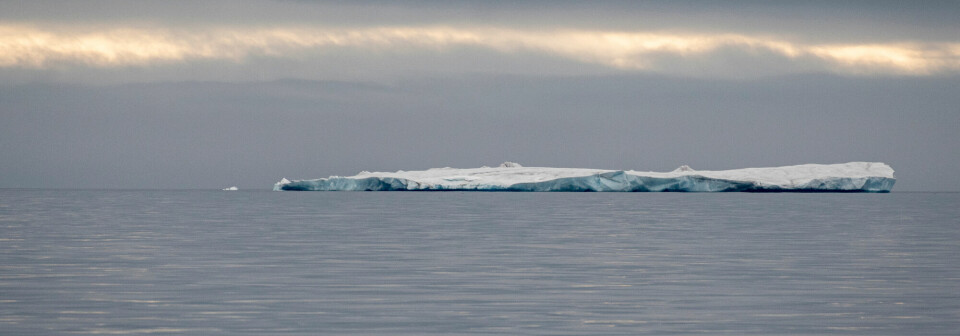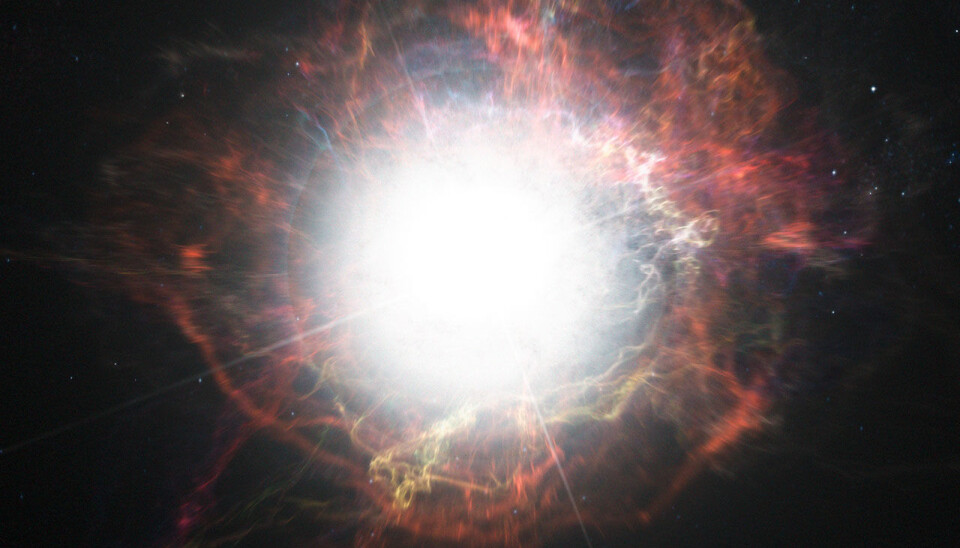
Scientists discover origins of cosmic dust
Danish scientists have solved the mystery of how cosmic dust is formed. The new knowledge could help the study of distant galaxies.
Planets are created when cosmic dust gathers in lumps that surround the stars, eventually growing to the size of entire planets.
But where does the cosmic dust come from?
That question has been nagging scientists for a long time but Danish scientists now have the answer.
In a new study recently published in Nature, scientists from Aarhus University and the Niels Bohr Institute at the University of Copenhagen show how cosmic dust is created when giant stars explode as supernovas, sending massive shock waves into surrounding layers of compressed gas.
At the back of the violent shock waves the gasses cool down to such an extent that the particles condense, creating cosmic dust that in time turns into both planets and people.
“The question about the creation of the cosmic dust has long puzzled scientists, but now we have the answer,” says lead author Christa Gall, postdoc at the Department of Physics and Astronomy at Aarhus University and the Niels Bohr Institute of the University of Copenhagen.
“Our study shows that the cosmic dust is created quickly by the supernovas and in very large sizes. The large sizes mean that the following shock waves from the supernovas don’t tear the particles apart,” she says.
How cosmic dust is created
When a giant star is nearing its end -- i.e. has used up all of its fuel and is approaching the point where it can explode as a supernova -- the star propels large quantities of material into space.
Part of this material is composed of gasses that surround the dying star like a cape.
In an instant the powers of gravity in the core of the giant star become too strong and the star explodes as a supernova. The explosion sends apocalyptic shock waves into space.
Previously scientists believed that the shock waves were so powerful that they would tear apart any cosmic dust, meaning that the supernovas couldn’t be the source of the cosmic dust.
When the shock waves hit the compressed gasses, the shock wave slows down. This means that the gas becomes even more compressed and cools down at the back of the shock wave.
At one point, the temperature hits approximately 1700 degrees Celsius, which is both sufficiently hot and cold for the gasses to condense and create cosmic dust.
Had it been hotter or colder, the cosmic dust would not have been created, but temperatures around 1700 degrees Celsius combined with the high density of the gasses create the perfect conditions for the creation of cosmic dust.
“Our observations show that it happens incredibly fast,” says Gall.
Cosmic dust is hit by another shock wave
However, the cosmic dust is not completely out of danger.
As the shock wave hits the wall of gasses, it is thrown back. Here it hits the newly created dust particles on the other side of the forward-going shock wave.
The argument against the theory that cosmic dust comes from supernovas has been that this reverse shock wave would be so powerful that the newly created cosmic dust would be torn apart again.
However, the new study shows that the new dust particles are so large that they can survive the reverse shock wave.
“That’s one of the major findings of the study,” says Gall.
Their observations show that the dust particles measure between 1 and 5 micrometres (equivalent to one thousandth of a millimetre), which is very large for cosmic dust.
“The size means that the dust particles can survive the reverse shock wave as well as any other shock waves they may encounter in the galaxies,” she says.
Light frequency studied
To make this finding, the scientists studied an exploding supernova 40 times the size of the sun and ten times as luminous.
The scientists observed the supernova over a period stretching from a few days to 800 days after the explosion and studied the light signature of the supernova in the ultraviolet to the infrared spectrum.
By looking at changes in the light spectrum the scientists were able to work out what the light was passing through on its journey from the supernova to Earth.
“Dust absorbs light, and based on our data we could calculate the amount of dust as well as the size of the grains of dust and their composition. It revealed something very interesting,” says Gall.
Could aid study of distant galaxies
Director of DTU SPACE at the Technical University of Denmark, Kristian Pedersen says the new study definitely shows that supernovas contribute to the total amount of cosmic dust in the universe.
“The study shows that the supernovas create large quantities of cosmic dust when they explode. There can no longer be any doubt that the supernovas contribute significantly to the total amount of cosmic dust in the galaxies,” he says.
Pedersen also believes that the result could be instrumental in the study of distant galaxies. These galaxies must have had numerous supernovas that have produced vast amounts of dust. When the light from the distant galaxies hit Earth, they will have passed through large quantities of cosmic dust, which will have changed the frequency of the light.
“This makes it more red than it otherwise would have been. This has to be taken into account when observing these distant galaxies,” he says.
--------------
Read the original story in Danish on Videnskab.dk
Translated by: Iben Gøtzsche Thiele
